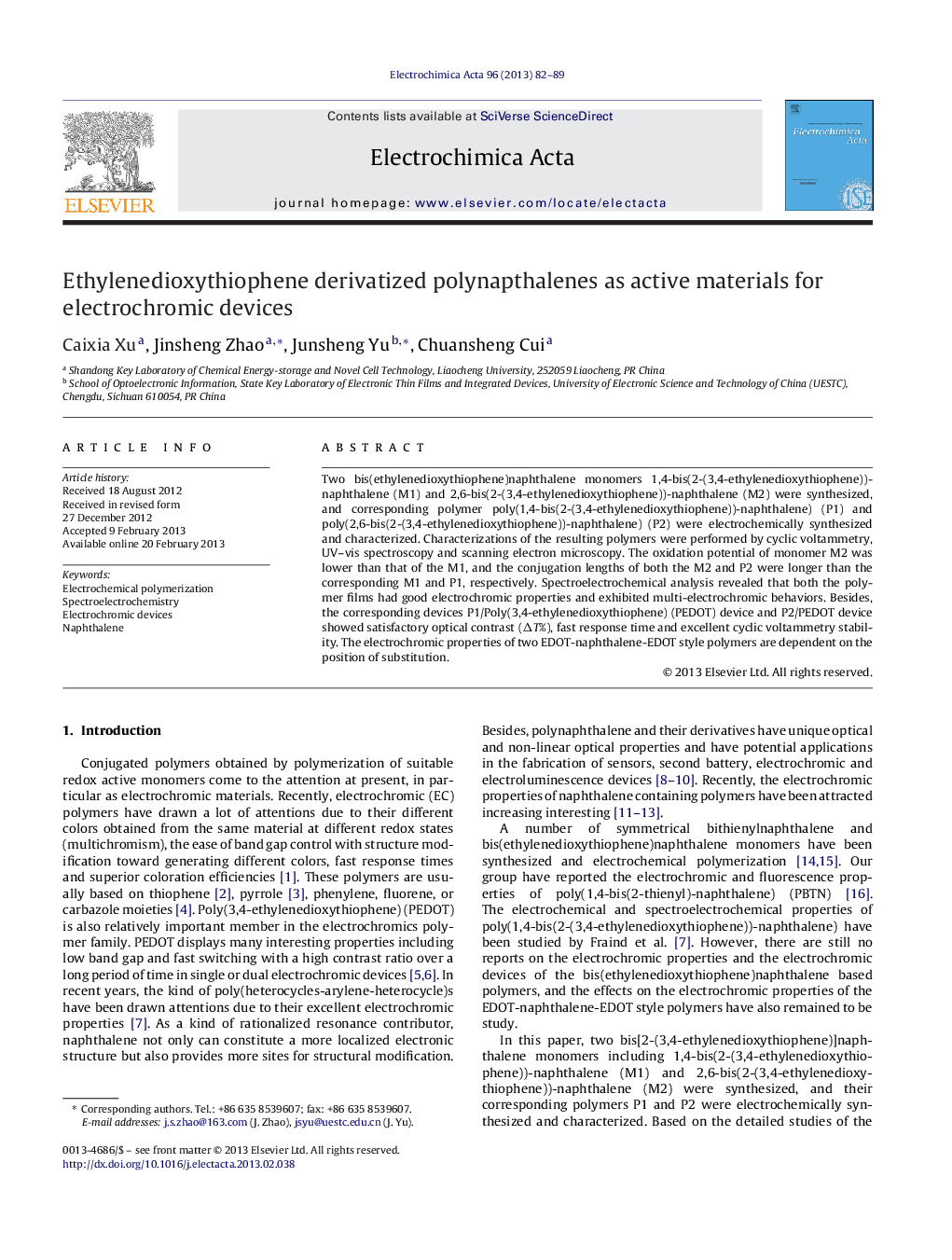| Article ID | Journal | Published Year | Pages | File Type |
|---|---|---|---|---|
| 186877 | Electrochimica Acta | 2013 | 8 Pages |
Two bis(ethylenedioxythiophene)naphthalene monomers 1,4-bis(2-(3,4-ethylenedioxythiophene))-naphthalene (M1) and 2,6-bis(2-(3,4-ethylenedioxythiophene))-naphthalene (M2) were synthesized, and corresponding polymer poly(1,4-bis(2-(3,4-ethylenedioxythiophene))-naphthalene) (P1) and poly(2,6-bis(2-(3,4-ethylenedioxythiophene))-naphthalene) (P2) were electrochemically synthesized and characterized. Characterizations of the resulting polymers were performed by cyclic voltammetry, UV–vis spectroscopy and scanning electron microscopy. The oxidation potential of monomer M2 was lower than that of the M1, and the conjugation lengths of both the M2 and P2 were longer than the corresponding M1 and P1, respectively. Spectroelectrochemical analysis revealed that both the polymer films had good electrochromic properties and exhibited multi-electrochromic behaviors. Besides, the corresponding devices P1/Poly(3,4-ethylenedioxythiophene) (PEDOT) device and P2/PEDOT device showed satisfactory optical contrast (ΔT%), fast response time and excellent cyclic voltammetry stability. The electrochromic properties of two EDOT-naphthalene-EDOT style polymers are dependent on the position of substitution.
Graphical abstractThis figure shows electrochromic properties of the polymers were greatly influenced by the different substituted position.Figure optionsDownload full-size imageDownload as PowerPoint slideHighlights► Two bis(ethylenedioxythiophene)naphthalene monomers are synthesized and their polymers are electrochemically synthesized. ► The polymer films display satisfactory electrochromic properties. ► The electrochromic properties of two polymer films are dependent on the position of substitution.
